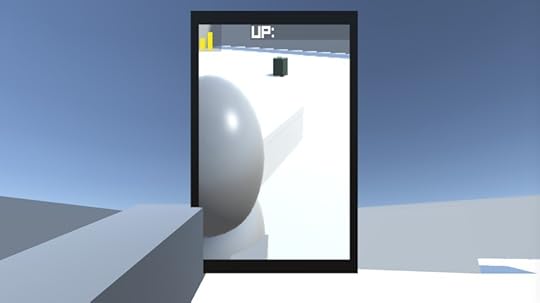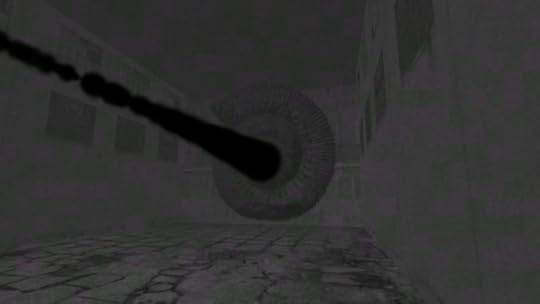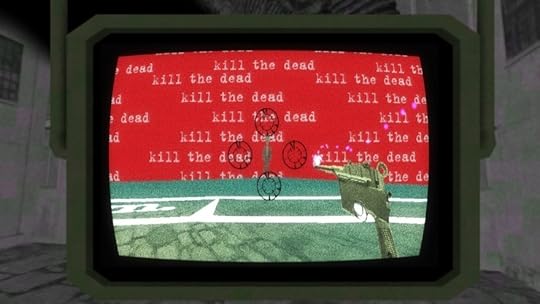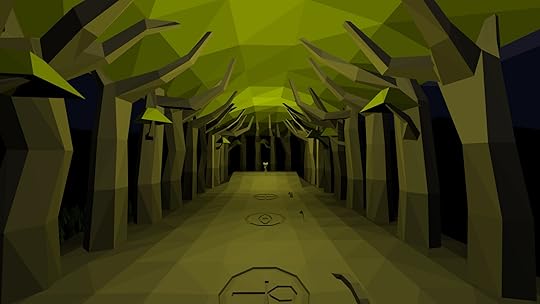Kill Screen Magazine's Blog, page 272
April 30, 2015
Tune into this psychedelic wonderland and never want to leave
Sign up to receive each week's Playlist e-mail here!
Also check out our full, interactive Playlist section.
GARDENARIUM (Windows, Mac, Linux)
BY PALOMA DAWKINS AND KYLER KELLY
People have wondered about the potential healing properties of psychedelics ever since Timothy Leary tried curing alcoholics by giving them acid in the '60s. To some, trippy drug-induced visuals are just hippie nonsense. To others, they're an invitation to embark on a journey of weirdness and self-discovery. Gardenarium presumes the latter, presenting you with a twirling, swirling world that unfurls as you pass, like a blooming flower on MDMA. Tasked with reaching the summit of a psychedelic mountain, you follow the path set before you on the promise of spiritual sightseeing. But it's not just the world of Gardenarium that gently pushes you forward on your quest: it's the citizens, too. Character after character, you learn more about how this hypnotic realm came to be. Somewhere along the way, you might learn a bit about yourself, and what you brought you here in the first place.
Perfect for: Flower children, Woody Guthrie, aliens.
Playtime: Depends on how much you took, man.

April 24, 2015
Selfies are your only weapon in this videogame
The invading army carried selfie sticks, or maybe those were just their arms. At this point, aren’t all arms just selfie sticks anyhow?
Aren’t all arms just selfie sticks anyhow?
In Selfie Assault, an entry to the Ludum Dare 32 game jam, your army of one is armed only with a cellphone. You walk around a white pavilion trying to kill green boxes. Those boxes, in turn, can only be killed by being captured in a selfie. And not one of those cheating selfies that you can do with an iPhone’s second camera, either. In Selfie Assault, only an old-school selfie can kill the enemy. Selfie Assault offers no reason to kill the green boxes; like selfies, it’s just something that you do.
The main challenge in Selfie Assault should be familiar to any cellphone owner: How to navigate the world while looking at your phone? Sure, the game allows you to see the world through your phone’s camera, but that degree of mediation makes everything a bit harder. Moreover, as anyone who has ever stumbled into a fire hydrant can tell you, being able to see around the edges of your phone is of limited use.

If that wasn’t difficult enough, you can only kill boxes in Selfie Assault while the image on your phone is inverted. Trying to navigate through the gameworld, then, is an awful lot like reversing a semi truck. Selfie Assault is the challenge of phone ownership in 2015 with a bit of added cuboid murder. It’s a surprisingly winning combination.
You can download Selfie Assault using the links on its Ludum Dare page.
New episode of Let's Play takes games beyond the screen
The first three installments of Laurent Checola and Thomas Kimmerlin's micro-documentary web series Let's Play invited viewers to examine the new frontiers for game designers, how they are participating in controversial conversations, and how they can challenge conventional notions of play and success. Now, the fourth episode discusses how designers are moving play from the screen to create a more physical, social experience.
Does Not Commute lets you peek at the divergent obsessions of a 1970s suburb
Simon Flesser—better known as half of Simogo—has a distinctive talent for finding the extraordinary in the mundane. He weaves mysteries into unexpected places and listless characters in a such a way that it grips your curiosity and pulls you in. It's what he, as a writer, brings to Does not Commute.
an adulterer journeying in secret
While this strategic driving game isn't part of the Simogo catalog, it being made by fellow Swedish videogame studio Mediocre Games, there's no denying the hand print of those responsible for DEVICE 6, Year Walk, and The Sailor's Dream. Through the medium of the daily commute, the interlaced stories to be found within a small yet busy 1970s town are slowly revealed.
At first it appears to be as you'd expect: people, like anyone else, on their way to work. But then their secret lives are revealed as they take detours between errands; scandals arise, weird obsessions emerge. Suddenly, you've got an adulterer journeying in secret, and it's this type of clandestine knowledge that you acquire that plays the part of Lynchian taint; reeling you in to darker territories like the severed ear in Blue Velvet. Seconds later, you're wrapped up in the secret lives behind the suburban mask. Now you're tracking the endurance of a wife whose husband has an unusual passion for Yorkshire Terriers. In the early morning (for you progress through the day), you discover that the school bus driver finds comfort in the excitable noise of the children playing in the seats behind her as it veils her screams of anxiety.
The most Simogo-style entry to all these characters, at least from what I have played, is a car that appears to have no driver. It's pointed out as odd by the in-game text, just to make sure you think of it as such while steering the mysterious vehicle along suburban roads. That no one else in the town seems to notice the driverless car speaks volumes about the town's personality. Either, a potential ghost sighting isn't out of place here, or they're all so wrapped up in themselves that it's impossible to see anything else.
no one else in the town seems to notice the driverless car
Your part in this unfolding drama is to ensure the safe passing of all cars as they criss-cross each other at the same time. To achieve this you experience a time paradox. At each top-down section of the town you stop off at, you are given a number of people (typically about 15) to steer from a starting point to their destination. It begins easy enough, as you're only concerned for a single driver and their A to B route. But each time you successfully escort one character, time is rewound, and another person and their vehicle is added to the scenario. Now you have to avoid the traffic of all your previous selves, as it were, while driving haphazardly to the next destination.
Making matters tougher is the time limit placed upon you to manage this simultaneous commuting challenge. Should you crash into another vehicle—be it the ice cream truck, moped, sports car, whatever—the car you're steering will be engulfed in smoke and be reduced to a crawl. Either, you can keep going and hope you don't lose too many seconds, or manually rewind to lose a single second from your overall time but get another go at a clean run.

What Does not Commute brings to light is how we're all so busy in our own lives that we miss the multitudinous stories popping off all around us. If you sit near a roadside and watch the traffic go by you'll see hundreds of lives in transaction, just out of reach. Does not Commute allows you to peek in at them for a short time and see the immorality seething beneath. But the challenge is in managing all these lives as they desperately break out of their routines, creating unexpected traffic flow while pursuing their private activities right under each other's noses.
You can download Does not Commute for free on the App Store and Google Play. It has a single in-app purchase at $1.99 that lets you restart from checkpoints.
Interactive exhibit features two decades of female game developers
From King's Quest 1 to Portal.
Go ghost-hunting in Geisterblut, a free-jazz blast of a videogame
Geisterblut is fucking nuts. Being "fucking nuts" appears to be its raison d'etre—its final screen, which you can reach in just a minute or two, hammers this home—but it's not "trying to be fucking nuts" in the manner of, say, a Russell Brand bit. It is, rather, a free-jazz skronk, a noisy freakout of a videogame, and if I'm being a bit vague here that's by design. It's no fun to spoil an act of improvisation.
Designed by nuprahtor for the game jam Ludum Dare 32, the game is ostensibly about hunting for ghosts. I'll say this: you've got a gun, and there are some ghosts for you to hunt. But it's the game itself that seems haunted, with some sort of vaguely German presence burbling under its surface, and a noteworthy Suda 51 influence, particularly the spectral abstractions of Killer 7.
the wild, improvisatory nature
There is a lot of talk of fathers, of inheritances. The clearest-cut parent to the game, besides nuprahtor, is the avant-garde musician John Zorn, whose 1990 album Naked City provides all of Geisterblut's tunes. That album seemed designed to test the limits of what instruments could do, zipping from smooth jazz to post-punk to bebop to surf rock, with vocals from the Boredoms' Yamatsuka Eye. It's an album of relentless invention, shocking even a quarter-century after its release, and it's a perfect match for the wild, improvisatory nature of Ludum Dare. Geisterblut is as good a case in point as any that necessity is the mother of invention.
You can download Geisterblut on itchio here.


Smooth Operator to bring people closer with awkward makeout sessions
Get gross and intimate.
Chris Milk on VR: “It can change people's perception of each other.”
TED Talk on VR points to its use outside of games
Sick of Zelda games? So’s this graphic novel
Enough is enough, Navi.
April 23, 2015
Rituals, the four-year artistic videogame diary, is due to arrive on May 27th
Tymon Zgainski is coming to the end of a four-year journey that has taken him from ennui to something closer to contentment, from teenager to adulthood. And now he has a date. His first-person exploration-adventure Rituals—formerly The Official—will be out of his hands and into the public's on May 27th through Steam. "I've dreamt of this day and finally it's happening," Zgainski tells me.
I've only spoken to Zgainski twice since he started working on his commercial debut back in 2011. At first he showed me a grim-looking low-poly office: a chair in empty space, a noose hanging over it as if to imply an inescapable connection between death and desk jobs. It reflected Zgainski's shadowy mood of the time as he learned to grapple the weight of mortgages, the meaning of life, and the mundanity that comes with growing up.
Much later, last year in fact, I spoke to a different Zgainski. He was a man full of dreams and escapism. When he showed me where he was at with Rituals back then, that grey office was nowhere in sight, favoring instead the bright greens of a jungle and a mysterious star-punched night sky. But none of what Zgainski had worked on previously had been lost. As I've written before, he has treated Rituals as an artistic videogame diary that he has filled with the changing thoughts in his head over the years, tying them together with the sturdy ribbon of an adventure game.
a game that's going to have us asking a lot of questions
It's due to this stream-of-consciousness-style approach to videogame production that makes it hard to pin down a single sentence that describes what Rituals is about (not made easier by my having not played it yet). Thank goodness, then, that Zgainsky has managed to do just that, and in the most teasing way. He says with confidence now that Rituals is about the the relationship between civilization and nature.
"Every environment and puzzle is designed to tell its own part of the story," Zgainsky explains. "What is the real purpose of the office building? Why are you walking through the woods at night? Whose voice are you supposed to hear?" It seems that it's to be a game that's going to have us asking a lot of questions. Whether any of the answers will be provided is unknown. But it seems fitting with the overarching eerie tones and pensiveness that it would be left open for interpretation.

What is known about Rituals is that it's a "classic" adventure game with point-and-click navigation and puzzles integrated into the environments. The idea being to provide an experience that you can play with only your computer mouse and your head. As you explore, you will find clues—symbols etched in floors, hand-written notes, amateur slideshow presentations—and with these you will seek out answers. "Be curious," Zgainsky encourages.
With the release date announcement, Zgainsky has brought us a new trailer that, above all, seems to capture the chaos of these final days before Rituals arrives in a finished state: a rising drone sound whirs while sharp cuts between escalating moments of panic from the game play alongside it. There's also a new website for those seeking a calmer way to interact with Rituals that takes you across the lost woods as you scroll, exploring it preemptively, clueless as to what its symbolic arrangements mean. No matter, as all will be revealed, and in only one month's time.
You can find out more about Rituals on its website.
Kill Screen Magazine's Blog
- Kill Screen Magazine's profile
- 4 followers



